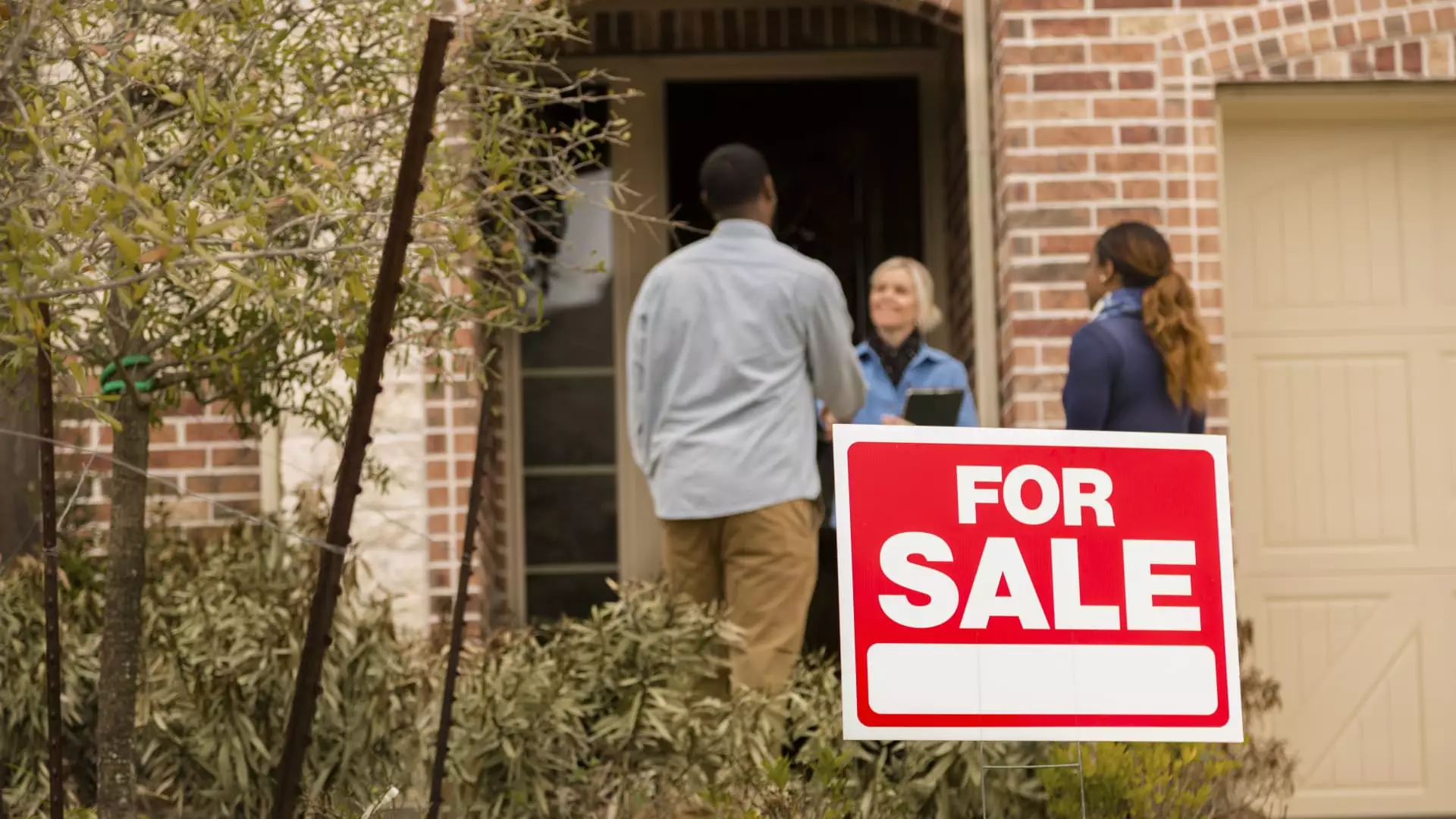The landscape of housing affordability in the United States is a nuanced mixture of relief and challenge. While recent data indicates that buyers may experience somewhat improved conditions due to decreasing mortgage rates, many are still grappling with the frustrating reality of high home prices and stagnant wages. This analysis delves into the recent shifts reported by Redfin, examining the factors influencing affordability and the implications for prospective homebuyers.
According to Redfin, the financial threshold for prospective homebuyers has decreased marginally, with an income of approximately $115,000 now needed to acquire a typical home in the U.S. Although this figure reflects a 1% dip from the previous year—signaling the first nominal decline since 2020—it nonetheless highlights the pressing affordability crisis that persists. The reason behind this slight improvement lies largely in the dipping mortgage rates; average rates for a 30-year fixed mortgage decreased to around 6.09% from a previous high of 7.22% earlier in the year. Daryl Fairweather, Redfin’s chief economist, cautions that the only significant change facilitating lower mortgage payments is the result of this rate fluctuation.
For many buyers, the relief brought by lower rates has sparked renewed interest in the competitive housing market. Yet, while this moment might feel like a reprieve, it is crucial to appreciate that such drops in mortgage payments are short-term phenomena—not necessarily indicative of sustainable affordability improvements. The persistent reality is that, generally speaking, housing payments remain daunting for many Americans.
One of the starkest challenges facing homebuyers today is the disparity between necessary incomes to afford homes and actual earnings. Redfin’s analysis showcases that the typical household’s median income of about $84,000 falls significantly short—by 27%—of what is required to secure a home. This economic gap places considerable stress on potential buyers, further complicating their ability to enter the housing market even amidst favorable mortgage rates.
Moreover, the ongoing rise in home prices compounds these issues. As reported, the median asking price for newly listed homes stands at $398,475, an increase of 5.4% compared to last year. This dual challenge of stagnant wages and escalating prices creates a disheartening environment where many would-be homeowners find themselves boxed out of the market entirely.
Despite these challenges, the market dynamic is beginning to shift, presenting both opportunities and new hurdles for buyers. Typically, the real estate landscape evinces a seasonally slower period during the fall, yet experts suggest that the recent influx of higher inventory—with over 1.35 million homes available for sale—could stimulate competition among buyers. The National Association of Realtors reports growth in inventory levels by 22.7% year-over-year, suggesting that more options may become available for those who have been waiting on the sidelines.
Interestingly, a sense of optimism arises as homebuilder confidence in new construction has also improved. An uptick in foot traffic to model homes and a slight decline in builders cutting prices indicates a possible resurgence in buyer interest. Economists like Orphe Divounguy from Zillow note that while current conditions appear favorable due to lower mortgage rates and abundant inventory, competitive challenges should not be overlooked.
Moving forward, projections for the housing market remain complex. The Federal Reserve’s intended interest rate cuts don’t guarantee continued decreases in mortgage rates, and evolving economic conditions will play a pivotal role in shaping future trends. Experts, including Melissa Cohn from William Raveis Mortgage, emphasize that rising employment and economic buoyancy could lead to increases in mortgage rates if conditions do not weaken further.
The anticipated “lock-in effect” among existing homeowners—those hesitant to give up their low-rate mortgages for potentially higher new loans—could also disrupt market dynamics. While a sustained increase in listings might initially seem beneficial, it risks setting the stage for even greater competition, with motivated buyers vying for a limited number of new options.
Overall, while recent trends indicate a momentary improvement for homebuyers, caution is warranted. The eventual balance of competition, economic signals, and pricing dynamics will ultimately dictate the sustainability of any improvements in housing affordability. As such, potential buyers must remain vigilant and prepared, as the landscape is as fluid as it is challenging.

